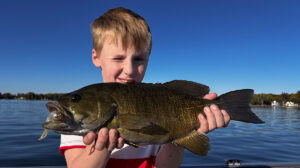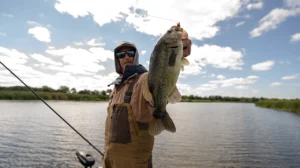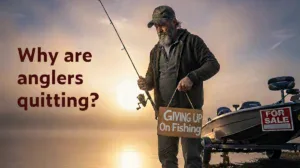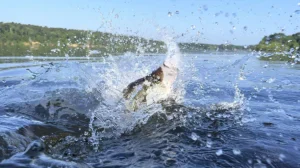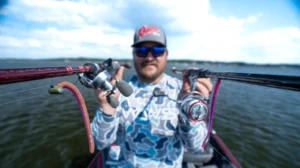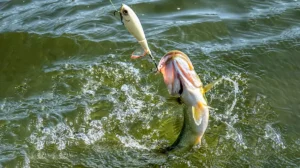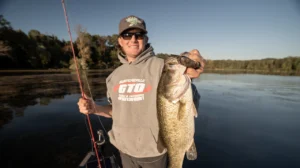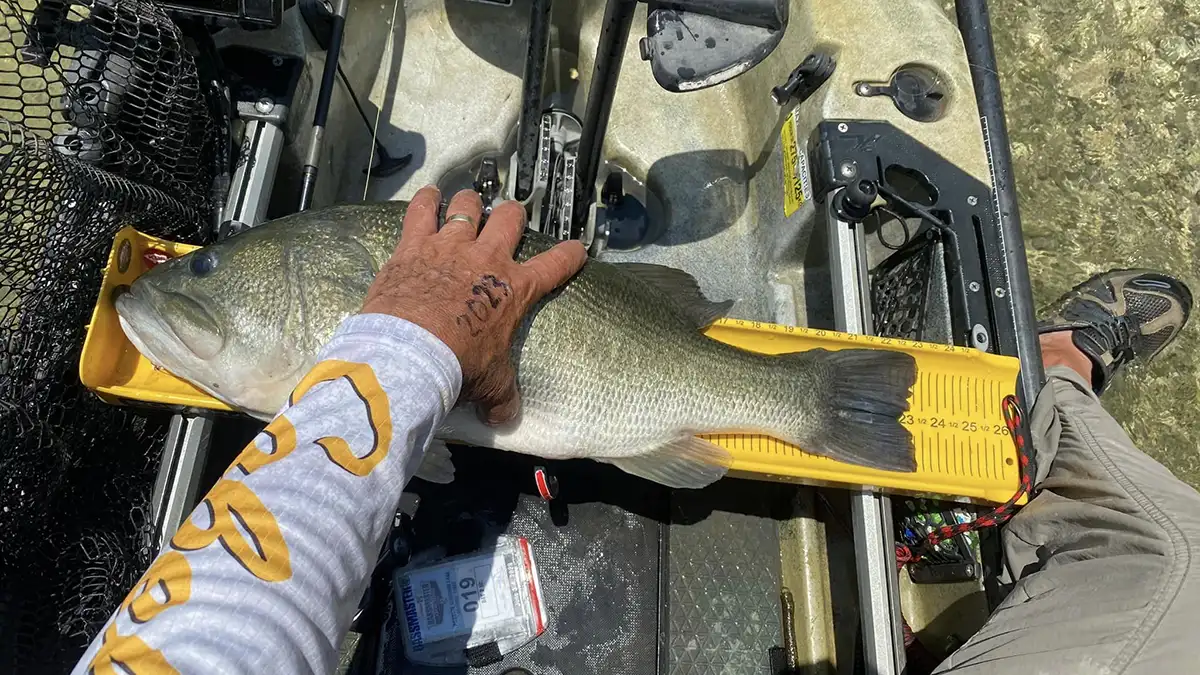Let’s face it, fishing the spawn is straight up fun. It’s an attractive way to fish, you can watch the fish react to a bait, and you catch a lot of fish. But the truth is, it can damage fisheries, and it gets kind of boring and repetitive after a while. At the same time, there are plenty of other bass to chase that aren’t sitting on beds.
I’ll admit it: I used to be one of those guys. And for a few hours during the bass spawning period each year, I still am. But when everyone is doing it day after day throughout the entire spawning cycle, it becomes very unsportsmanlike because of the negative effects it can have in the fish.
If you think about it, anglers who fish for bedding bass are disrupting them during the most critical part of their life, reproduction. It’s one of the most vulnerable times for a bass throughout the whole year and you’re over there dangling your bright pink Ned rig or white craw-style bait in the nest trying to catch a defenseless fish fighting to protect what it made. We’ve watched this year after on our favorite bodies of water, especially with bedding smallmouth. Boat after boat would move onto the same spawning flat pulling the same fish of the same beds we just did. It left a sick feeling in my gut watching those fish get caught over and over.

Over the past few seasons, my fishing partners and I have experimented with a few alternative ways to catch bass — big ones — during this time period, without molesting a single bed. So, we took it into our own hands to figure out some new strategies, and they turned out to pay off in a big fish way.
Bass Biology: What to Look for on the Water
I think many of you know what the bass spawn consists of, so I won’t go into much detail. Depending on the species, the moon cycle, in combination with water temperature, drives bass to start spawning. When the stars align, it can be magical and one of the coolest parts of the year to watch. It’s like National Geographic without the monthly subscription fee.
The biggest key to remember is that NOT ALL bass spawn at the same time. Throughout the temperature change in the spring, multiple moon cycles will push more bass to spawn. This especially happens in the Southeast and Southwest, where the temperature changes more gradually through the spring.
Both full and new moons trigger the spawn, but usually the full moon has more of an effect on the bass. The night is brighter on a full moon, which makes the bass more active and gives them more time to look for a spot to fan out a nest. In most cases, the first or second full moon, coinciding with the right water temperature, will bring the biggest waves of the spawn, when the most bass will be spawning. There will always be bass in multiple stages of the spawn until the water gets too warm and all bass have completed the cycle. Paying attention to the lunar calendar to watch for these events can be your key to switch gears and try something different to get away from the crowds.

Looking Elsewhere
Since not all bass spawn at the same time, there are plenty of other options to explore. Whether it’s pre-spawn, post-spawn, or even males guarding fry, the options are endless and don’t mean you have to intrude on a bass’s “sexy time.”
Finding the Opposite Species
“When smallmouths are glued to beds here in the North Country, the first thing I do is try to find a largemouth. Green fish are usually still pre-spawn and much more willing to cooperate,” says Tristen Bauer, owner of T’s Tackle Custom Jigs out of Theresa, N.Y. Tristen and I graduated together with fisheries degrees from the State University of New York at Cobleskill and have been fishing together since. With a fisheries background, both of us have seen and read enough peer-reviewed articles to know what fishing for nesting bass does to the fisheries.
That being said, Tristen is a big-time largemouth fisherman.
“When the season starts up here in the North Country and the smallmouth are on beds, I steer clear of the St. Lawrence and Ontario to get away from those bedding fish. There are plenty of great largemouth lakes around to keep us occupied until the smallmouth are done with their spawn,” Bauer says.

Usually, around this time of year, the largemouth are still pre-spawn and willing to bite. The same goes for smallmouth when largemouth are on beds, except the smallmouth will be on the post-spawn end of the cycle.
Looking for Summer Patterns
This usually works better toward the end of the spawn or after the first real wave of spawning is finished. This is the time of year when the grass starts growing taller, and many of the area boat docks hold feeding fish. Bauer says, “Bluegills are the arch-nemesis of bass. They will try to eat the fry and eggs.
It’s one of the few species bass will react to and chase out of their territory.” A great bait that imitates a bluegill during this time is a swim jig matched with a trailer to match the size of the bluegill in that water body. While Bauer makes his own swim jigs, I’m a huge fan of the Beast Coast Workingman’s Swim Jig with a Strike King Rage Menace Grub rigged vertically to have the tails emulate a bluegill tail.
Those larger post-spawn females are usually exhausted after spawning and aren’t willing to chase a bigger bait, so this requires some finesse. This is where a dropshot with a 6-inch Roboworm or a 5-inch Yamamoto Senko rigged wacky style will produce those bigger bites from lethargic fish.

Roaming Fish
Since not every fish spawns at the same time, some bass are still in the area, thinking about getting ready to spawn. Whether it’s other males looking for a spot to make a nest or females in anticipation of spawning, fish are always roaming the shallows. This is where shallow crankbaits play a big role. There’s something about burning a square bill, banging it off every single rock, that just drives bass crazy—and they have no choice but to grab it! The Luhr Jensen Speed Trap is my go-to shallow-diving crankbait during the spring. Its hard-knocking rattle and deflecting bill truly drive bass nuts.
On the other end of the spectrum, especially for smallmouth, finesse and covering water can be key. After seeing Dan Miguel and Matt Dobson smash a 32-pound bag of smallmouth in a Douglas Rods Open on the St. Lawrence in 2023, they introduced a magical bait to the world: the Great Lakes Finesse Sneaky Underspin paired with their matching Drop Minnow.
It’s a bait/jig-head combination designed to target roaming fish that aren’t fully committed to spawning. A long cast and a slow, steady retrieve back to the boat—keeping it from hitting bottom — can lure these big smallmouths to have a little snack. Since then, it’s been a bait I always keep tied on during spawning time.

—
The spawning period can be a very controversial time of year to fish for all anglers. But it’s not the only way you have to catch them. Don’t be discouraged when you see spawning bass all over and think that’s the only way you’ll be catching them. There are always other options. You just need to do some digging and figure out what the feeding fish want to bite. You’d be surprised how many big fish aren’t on nests during the spawn. Look elsewhere, and you’ll be amazed at what you find and what bass will be willing to strike. You’ll be glad you tried!


